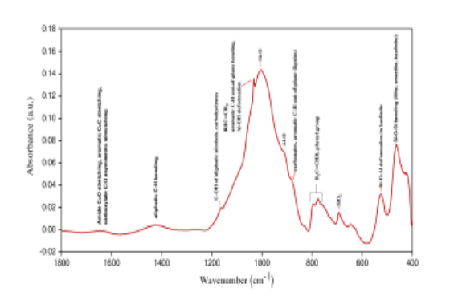


Indian Journal of Science and Technology
DOI: 10.17485/IJST/v17i11.2930
Year: 2024, Volume: 17, Issue: 11, Pages: 1087-1096
Original Article
Preeti Sangwan1, Chongtham Nimi2, Tarsem Nain3, Rajinder Singh2, Neelkamal Sharma4*
1Department of Forensic Science, Maharshi Dayanand University, Rohtak, 124001, Haryana, India
2Department of Forensic Science, Punjabi University, Patiala, 147002, Punjab, India
3Department of Genetics, Maharshi Dayanand University, Rohtak, 124001, Haryana, India
4Associate Professor, Department of Forensic Science, Maharshi Dayanand University, Rohtak, 124001, Haryana, India
*Corresponding Author
Email: [email protected]
Received Date:19 November 2023, Accepted Date:09 February 2024, Published Date:07 March 2024
Objective: To discriminate and classify soil samples collected from different regions of Haryana, India. Methods: Attenuated Total Reflectance Fourier Transform Infrared (ATR-FTIR) spectroscopy with multivariate statistical tools is employed. A total of 232 samples were collected. A composite mixture of all districts was prepared, having twenty-nine top and twenty-nine depth soil samples. Chemometric methods, namely, PCA (Principal Component Analysis) and PCA-LDA (Principal Component Analysis-Linear Discriminant Analysis) were used to interpret the data. Findings: Soil samples are well characterized by their organic and inorganic contents. Sample clustering due to similarity in chemical composition was visualized using PCA. PCA-LDA resulted in 100% classification accuracy for top soil and 98.85% classification accuracy for depth soil. Blind test validation was carried out, which resulted in 100% and 80% prediction accuracies for top soil and depth soil respectively. The present research methodology effectively discriminated soil samples and can be utilized by forensic investigators dealing with cases that involve soil as vital evidence. Novelty: Study reveals novel unexplored geographical location, local soil variability, practical implications of non-destructive analytical technique combined with chemometrics methods, contextualization with the previous studies and the potential policy field relevance.
Keywords: Soil forensics, ATRFTIR, PCA, LDA, Discrimination
© 2024 Sangwan et al. This is an open-access article distributed under the terms of the Creative Commons Attribution License, which permits unrestricted use, distribution, and reproduction in any medium, provided the original author and source are credited. Published By Indian Society for Education and Environment (iSee)
Subscribe now for latest articles and news.